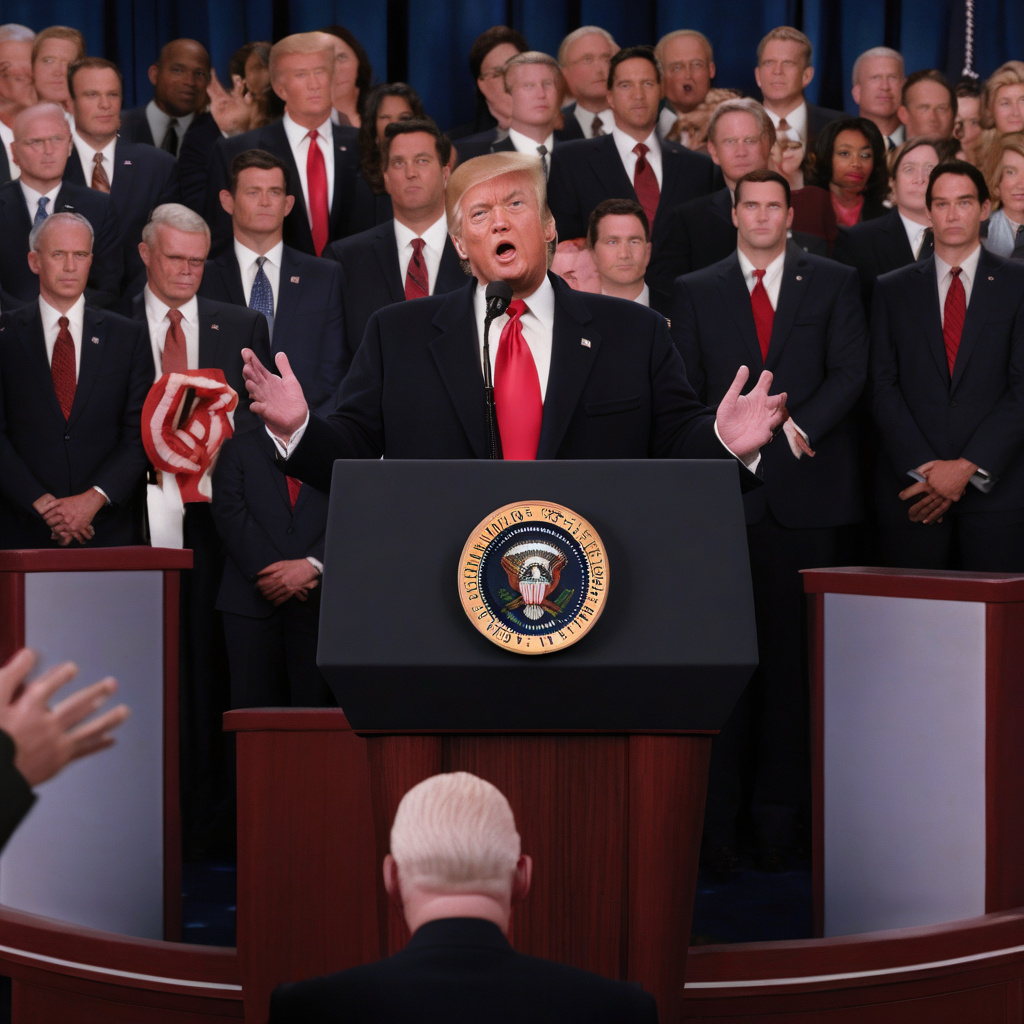Trump’s Tariff Plan: Impact on Patented Drugs and Industries
In a bold move that could potentially shake up multiple industries, President Donald Trump has unveiled plans for a new wave of tariffs. This latest development includes a significant 100% duty on patented drugs, among other products like heavy trucks and furniture. However, there’s a catch – this steep tariff on patented drugs can be avoided if the pharmaceutical producer opts to establish a manufacturing plant within the United States.
The pharmaceutical industry, known for its high-profit margins and significant reliance on patents for revenue generation, is expected to feel the impact of this proposed tariff keenly. With the potential for a doubling of production costs for imported patented drugs, many pharmaceutical companies are now faced with a tough decision – either absorb the additional costs or consider shifting manufacturing operations to the US.
One of the primary objectives of this tariff plan is to incentivize pharmaceutical companies to invest in domestic manufacturing, thereby creating more jobs within the country. By imposing a 100% duty on imported patented drugs, the Trump administration aims to level the playing field and reduce reliance on foreign-produced pharmaceuticals. Additionally, this move aligns with Trump’s broader agenda of prioritizing American manufacturing and boosting the economy.
While the intent behind this tariff proposal is clear, the potential implications for both the pharmaceutical industry and consumers remain uncertain. On one hand, domestic manufacturing of patented drugs could lead to job creation and economic growth. It could also enhance the country’s self-sufficiency in producing essential medications, reducing dependency on imports. However, the immediate impact of such a steep tariff on drug prices and availability is a cause for concern.
Pharmaceutical companies are now faced with a strategic dilemma – whether to incur higher production costs for imported drugs or invest in setting up manufacturing facilities in the US. This decision could have far-reaching consequences for the industry, including supply chain disruptions, pricing adjustments, and market competitiveness. Moreover, the potential ripple effects on related sectors, such as healthcare and insurance, need to be carefully considered.
As discussions around this tariff plan continue to unfold, stakeholders from various sectors are closely monitoring the situation. The outcome of these deliberations could not only shape the future of the pharmaceutical industry but also set a precedent for how the US approaches trade policies in a post-pandemic world. Balancing economic interests, healthcare priorities, and international relations will be key in navigating the complexities of this proposed tariff on patented drugs.
In conclusion, President Trump’s announcement of a 100% duty on patented drugs, unless produced domestically, marks a significant development in the realm of trade policies. The implications of this tariff plan extend beyond the pharmaceutical industry, impacting sectors like manufacturing, healthcare, and global trade dynamics. As the debate unfolds, the ultimate effects of this bold move will become clearer, shaping the landscape for industries and consumers alike.
tariffs, pharmaceuticals, manufacturing, economy, trade











